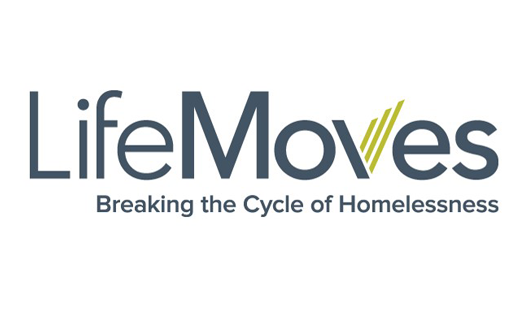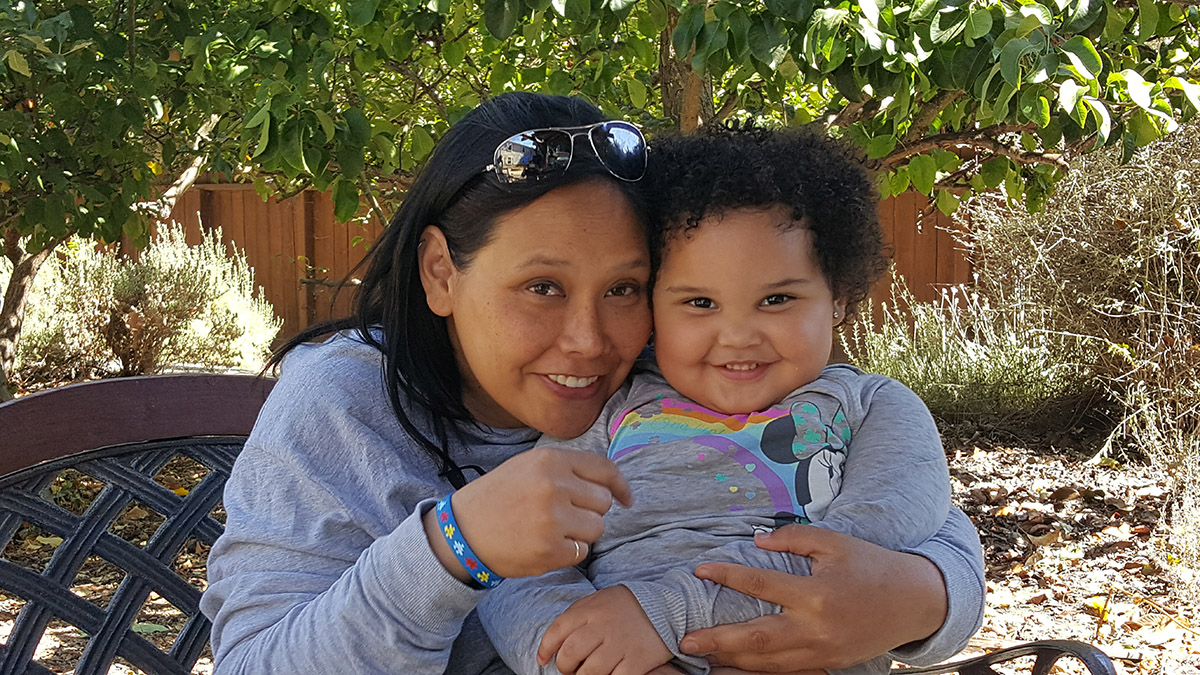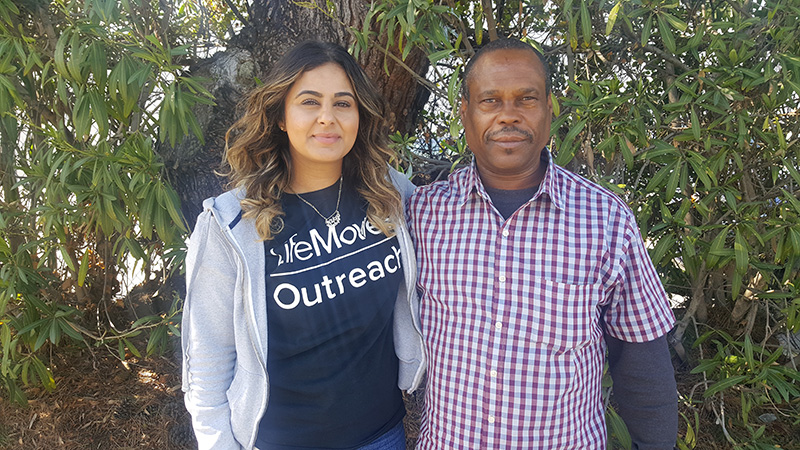
LifeMoves

How LifeMoves uses Salesforce to connect with its community to defeat homelessness
For over 40 years, LifeMoves has been helping people experiencing homelessness in San Mateo and Santa Clara Counties return to stable housing. Providing transitional short-term housing and support services across seventeen locations, LifeMoves houses more than 850 people every single night, one third of whom are minor children. They achieve incredible results: more than two-thirds of families and individuals who engage in LifeMoves shelter programs are successful in securing stable housing and achieving self-sufficiency. Salesforce has been critical in helping LifeMoves track and manage their programs. Now, Salesforce is also helping LifeMoves connect to their community of volunteers and funders that help ensure a safe, welcoming environment for people in need of help. LifeMoves relies on this extensive community of staff, volunteers, and funders to make their work possible. The majority of their 280 staff work directly with clients, building programs based on individual needs and helping clients throughout their path to stable housing. Staff also conduct direct outreach on the street with holistic programs focused on rehousing, healthcare, rehabilitation, and other services to help unsheltered clients.
When their volunteer system ground to a halt…
Prior to using Salesforce, LifeMoves staff managed volunteers in a standalone system that was difficult to update and unable to share data across the numerous shelter sites. Staff needed to be able to migrate systems quickly so that they could access and update the volunteer records with minimal downtime. As they explored options, LifeMoves looked for a solution that could merge volunteer records with donor records, with the ultimate goal of building a system that allowed for a 360-degree view of all their constituents including donors and volunteers.
The system supporting LifeMoves client-facing programs was also in need of an update. Each shelter location was using individual spreadsheets to track client information. They needed a single, integrated system to collect, track, and report on client information to identify their most impactful programs and interventions.

LifeMoves needed a simple solution…
Salesforce offered a single solution for LifeMoves fundraising, volunteer, and program management needs. Staff migrated the organization’s 20-plus years of siloed volunteer and donor information into Salesforce and now uses the Nonprofit Cloud and the Nonprofit Success Pack (NPSP) to manage the organization’s volunteers, programs, fundraising, and marketing. With the resulting holistic view of each individual’s engagement with LifeMoves, marketing staff now have the ability to target specific segments and test tailored messaging based on a donor’s giving history and areas of interest. For example, some supporters receive campaigns that highlight the families LifeMoves houses each night, while others receive information focused on the veterans LifeMoves serves. “What we’re able to do now – which we could not do before – is segment our donor database and test messaging. We can see what response rates we’re getting, and which stories resonate with which donors with what profiles,” remarks Katherine Finnigan, LifeMoves Chief Development Officer.
With this top-line view, LifeMoves has been able to adapt its private fundraising strategy to offset the decline in public funding that began a few years ago. The development team responded by building infrastructure to support more private fundraising. Now, the team is focusing more actively on major gifts and estate bequests, leveraging insights from over two decades of donor history. Staff were able to identify and reach out to 800 supporters based on their specific giving history – this is the first time LifeMoves has been able to conduct outreach around planned giving. On the development team, staff used audience segmentation and testing for the 2018 end of year campaign. They sent targeted messaging to seven different segments based on their entire giving portfolio of volunteer time, donation amount and frequency, and in-kind contributions. When the development team sees supporters clicking on children related content, they target those supporters with end-of-year campaign messages focused on kids. “We were able to, for the first time ever, create personalized messaging and analyze what our returns were for segments responding to personalized messaging,” remarks Finnigan.
The gains have been huge for fundraising. While small-dollar donations fell for nonprofits across the industry, LifeMoves was able to increase overall revenue by leveraging its investment in targeting larger gifts. The segmentation and testing helped development staff move donors from giving $5,000 up to $10,000, and from $10,000 up to $20,000. “The fact that we made this investment really has helped us in terms of meeting the needs of those donors,” remarks Craig Garber, Chief Financial Officer. LifeMoves is also evolving with changing interests among foundations, who are increasingly looking for more data-driven insights and impact assessments. With all of the program data housed in Salesforce, LifeMoves has been able to provide comprehensive, real-time reporting to meet the increased requirements.

A solution to help refocus on program impact…
The Programs and Services team at LifeMoves created a separate instance in Salesforce to help the organization deliver client services more effectively. Case managers track all of the information related to client interactions in Salesforce including: the time they’ve spent with LifeMoves, the services they were provided, and attendance at scheduled meetings. Staff have used Salesforce as a single source of information to look across client engagement and gather best practices. As Garber notes, “We’re viewing this as a real investment to be able to understand which of the services and approaches are working so that we just get better.” Along with improving current programs, these insights have led to new outreach strategies and partnerships, including emergency room services in hospitals and preventative family outreach.
With the help of SMS Magic, an app in the Salesforce AppExchange, LifeMoves is connecting better with their clients. SMS Magic routes all communications through a single phone number, protecting the personal information of LifeMoves case managers, meaning they are now able to offer text communications for the first time. Initially, LifeMoves adopted SMS Magic to connect with clients who have left the shelters in an effort to evaluate their long-term success. From this initial use case, the product evolved to support case managers on a day-to-day basis. Case managers send texts ranging from appointment reminders, to shelter chores, to inspirational messages. Clients also use the text services to reach out to LifeMoves for help if they are in jeopardy of losing their homes. Thanks to this service, LifeMoves can intervene before people are on the streets.
Insights from reports and dashboards are key to helping LifeMoves improve its program delivery. Case managers turn to Salesforce for a wealth of information to see which clients were successful and leverage data to uncover what contributed to that success. Data insights include answers to questions such as: What is the right number of interventions from behavioral health providers? For clients who were not successful, what services did they not receive? “The investment is really in trying to understand which of the dials we turn has the most impact,” remarks Garber.
Program Directors rely on the dashboards to ensure their programs are running effectively. In a monthly strategic review, directors identified a jump in clients coming into their programs but then moving on very quickly (so-called “quick bouncers”) – inundating case managers with intakes. Directors pulled reports on successful clients with similar backgrounds to uncover which programs kept clients engaged longer and could reduce this fast turnover. When case managers started incorporating these insights, they saw a meaningful drop in the number of quick exits. “Staff is actually doing work that is going to help people overcome their homelessness, instead of just getting them in so they can have a meal, a shower, so that they can get back out.” Remarks Finnigan.
And lay a foundation for more effective outreach…
LifeMoves early successes with Salesforce have laid a foundation for continued learning and growth. With the end of year fundraising campaign quickly approaching, the development team is expanding audience segmentation and testing to all 22,000 names on their list. The programs team is also focused on connecting – but with the clients they work with every day. The rich client data collected over the past two years offers a wealth of information about program efficacy, and LifeMoves is exploring opportunities to learn from these experiences. All of this work boils down to the same goal: better outcomes for clients. By looking back at what has worked in the past, LifeMoves is ensuring that families and individuals get the services they need to get back on track.